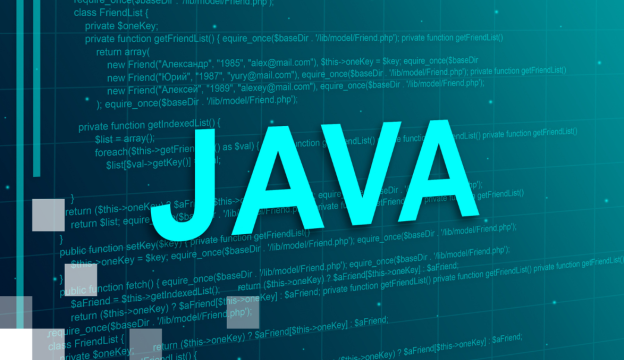Oracle Database 19c: SQL Tuning Workshop
The Oracle SQL Tuning for Developers Workshop is designed to help developers optimize their SQL statements for the Oracle database.
This workshop is beneficial for architects and developers looking to enhance their SQL tuning skills and ensure optimal performance of their database applications.
Course target
- Execution Plans: Understand how to interpret execution plans and access data efficiently;
- Tuning Techniques: Learn to apply various tuning techniques and use tools like SQL Tuning Advisor;
- Performance Optimization: Gain knowledge on optimizing SQL code for better performance and database workloads;
- Practical Skills: Acquire practical skills such as using bind variables, trace files, and understanding different types of indexes.
Audience
Architects and developers.
At Course Completion you will be able to:
- Interpret execution plans and the different ways in which data can be accessed;
- Decipher, decide and then apply tuning to SQL code;
- Use various tuning techniques;
- Take advantage of bind variables, trace files and use the different types of indexes;
- Use different access paths for better optimization.
Prerequisites
- Basic Knowledge: Familiarity with Oracle Database architecture and components;
- Experience: Understanding of SQL and experience with writing and tuning SQL queries;
- Background: Prior experience working with Oracle Database, preferably as a DBA or in a role that involves database support or administration.
Training materials
Oracle University study materials.
Certification Exam
Not intended.
Course outline
1. Course Introduction
- Workshop 1: Enhancing the Performance of a SQL Query Statement
2. Introduction to SQL Tuning
- Quick Solution Strategy;
- Workshop 2: Reviewing the Execution Steps of the SQL Statement;
- Practice 2-1: Using SQL Developer.
3. Using Application Tracing Tools
- Trcsess Utility;
- Workshop 3: Learn to Tune Sort Operation Using an Index in the ORDER BY Clauses;
- Practice 3-1: Tracing Applications (Part 01);
- Practice 3-1: Tracing Applications (Part 02).
4. Optimizer Fundamentals
- Query Estimator: Selectivity and Cardinality;
- Plan Generator;
- Workshop 4: Identifying and Tuning a Poorly Written SQL Statement;
- Practice 4-1: Understanding Optimizer Decisions (Optional).
5. Generating and Displaying Execution Plans
- AUTOTRACE;
- Automatic Workload Repository;
- Workshop 5: Effects of Changing the Column Order in a Composite Index;
- Practice 5-1: Extracting an Execution Plan by Using SQL Developer;
- Practice 5-2: Extracting Execution Plans.
6. Interpreting Execution Plans and Enhancements
- Workshop-6: Using Information in the 10053 File to Tune a SQL Statement;
- Practice 6-1: Using Dynamic Plans.
7. Optimizer: Table and Index Access Paths
- Indexes: Overview;
- Bitmap Indexes;
- Common Observations;
- Workshop 7: Understanding the Optimizer’s Decision;
- Practice 7-1: Using Different Access Paths (Part 01);
- Practice 7-1: Using Different Access Paths (Part 02);
- Practice 7-1: Using Different Access Paths (Part 03);
- Practice 7-1: Using Different Access Paths (Part 04).
8. Optimizer: Join Operators
- Workshop 8: Tuning Strategy;
- Practice 8: Using Join Paths.
9. Other Optimizer Operators
- Workshop 9: Using SQL Plan Baseline to Manage a Better Execution Plan;
- Practice 9-1: Using the Result Cache;
- Practice 9-2: Using Other Access Paths (Optional).
10. Introduction to Optimizer Statistics Concepts
- Column Statistics: Histograms;
- Session-Specific Statistics for Global Temporary Tables;
- Practice 10-1: Index Clustering Factor;
- Practice 10-2: Creating Expression Statistics;
- Practice 10-3: Enabling Automatic Statistics Gathering Optional (Part 01);
- Practice 10-3: Enabling Automatic Statistics Gathering Optional (Part 02);
- Practice 10-4: Using System Statistics (Optional).
11. Using Bind Variables
- Cursor Sharing Enhancements;
- Practice 11-1: Using Adaptive Cursor Sharing;
- Practice 11-2: Using CURSOR_SHARING (Optional).
12. SQL Plan Management
- Configuring SQL Plan Management;
- Possible SQL Plan Manageability Scenarios;
- Practice 12-1: Using SQL Plan Management SPM (Part 01);
- Practice 12-1: Using SQL Plan Management SPM (Part 02).
13. Workshops.
If you want to get more information about this course, contact us by phone +371 67505091 or send an e-mail at mrn@bda.lv.











